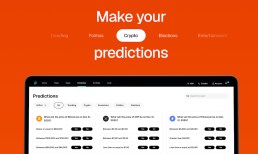On a perfect day, when everything goes exactly to plan, managing a supply chain is no easy task — particularly when procurement processes have to handle scores of suppliers spread out across the globe.
Also, as LevaData Founder and CEO Rajesh Kalidindi and Resilinc CEO and Founder Bindiya Vakil told PYMNTS in a recent conversation — there are very few perfect days in supply chain management. Because, said simply — a whole lot of things can wrong — production delays, inclement weather, political turmoil, changing business relationships, FX issues, raw material shortages — the list goes on and on.
It is a staggering amount of ever-changing data — and one that is almost impossible to keep track of in a world where the vast majority of supply chains are still managed through paper forms, emails, excel spreadsheets and much manual labor.
“Even in the most well-run supply chains, it doesn’t matter if you have the most significant leverage in the market, have invested heavily in internal tools, or have the best team. If you are using traditional sourcing methods as opposed to augmented methods, you are leaving money on the table every single day,” Kalidindi said.
The market, he said, is not just severely in need of digitization — a specific type of digitization guided by machine learning and artificial intelligence that LevaData refers to as Cognitive Sourcing, which exists to do two things.
First, Cognitive Sourcing scours the web for all publically available data points that might be relevant to a supply chain manager’s operations in terms of possible opportunities to gain advantage or places where they ought to avoid risk. Beyond that, Cognitive Sourcing takes that data “as it comes in and turns it into insight by ranking the information based on its impacts. From there it can recommend what they should be doing, Kalidindi noted.
Advertisement: Scroll to Continue
Finding The Signal In Nearly Infinite Noise
Earlier this week, LevaData and Resilinc partnered to integrate the latter firm’s supply chain risk monitoring AI into LevaData’s Cognitive Sourcing platform to strengthen the data gathering side of the operation.
Unearthing all of the relevant risk and opportunity data out there that could influence a supply chain is a singularly massive undertaking as it is data coming in from a variety of sources, across many channels, in scores of different languages. Trying to build a human workforce adequate to the task of keeping up with all of that information in real time would be practically impossible Vakil noted.
Moreover, building an AI and automated platform sufficient to the task, Kalidindi followed, is beyond the scope of what one firm can provide — which is why Resilinc’s supply chain risk management and mitigation AI was an ideal integration for LevaData’s platform.
What they can offer in a combined product, he noted, is essentially a much better and more comprehensive view of the market that will be able to quickly “see” and highlight for manager potential areas of concern in the supply chain.
“What managers don’t know certainly can hurt them and it is incredibly easy to not know about something that happened halfway around the world and was perhaps only reported in local media in Mandarin Chinese.,” Kalidindi noted
The good news, he said, is that the corollary is also true — what supply chain managers do know can help them. It can help them quite a lot in gaining and retaining a competitive advantage in a market because by using Cognitive Sourcing they are responding and tailoring their operations to information their competitors don’t even know exists yet.
However, he noted, to capture that advantage, it is not enough for Cognitive Sourcing to unearth the right relevant data. It also has to give the user tools to act on it.
Turning Data Into Competitive Advantage
As important as putting out the right data is for Cognitive Sourcing, knowing the correct information is only half the battle. Action is the other half of the equation — and to help guide that action LevaData provides an AI and machine learning-powered negotiating assistant that pops up for users as new data comes in. Said simply — that assistant is there to take all the information the Cognitive Sourcing platform has taken in and use it to generate the optimal market actions.
That might mean if a supply shortfall is imminent due to a raw material shortage — a buyer might know it is time to hedge and stock up. Alternatively, if the price of goods is about to plummet due to FX headlines, the negotiating assistant might start guiding the user to scaling back their pace of purchase. Moreover, he noted, in a world where buyers are negotiating with a legion of suppliers at once — the AI assistant can keep all of those individual conversations focused, data-driven — with the buyer operating with a clear look at the landscape below them.
The buyer isn’t just asking for pricing, Kalidindi said, but able to go broader and deeper into their negotiations for it because the platform can keep them both informed and on track. That, he noted, pays off directly for firms. At a minimum, supply chains see their net efficiency increase 2 percent to 3 percent when they move from traditional to cognitive sourcing. They are also able to take on additional opportunities.
Moreover, he noted, as they continue to enhance the platform with partners like Resilinc to increasingly hone their ability to capture the full state of a supply chain — they can move the digitization of the supply chain toward what he believes its inevitable future is: automation.
In the past, supply chain negotiations were handled by managers tethered to the process by piles of papers and inconsistent data flows. The future, he said, will be in AI dealing directly with suppliers and optimizing deals on managers’ behalfs “especially those in the long tail where the individual spend is low but it adds up over a lot of them.”




